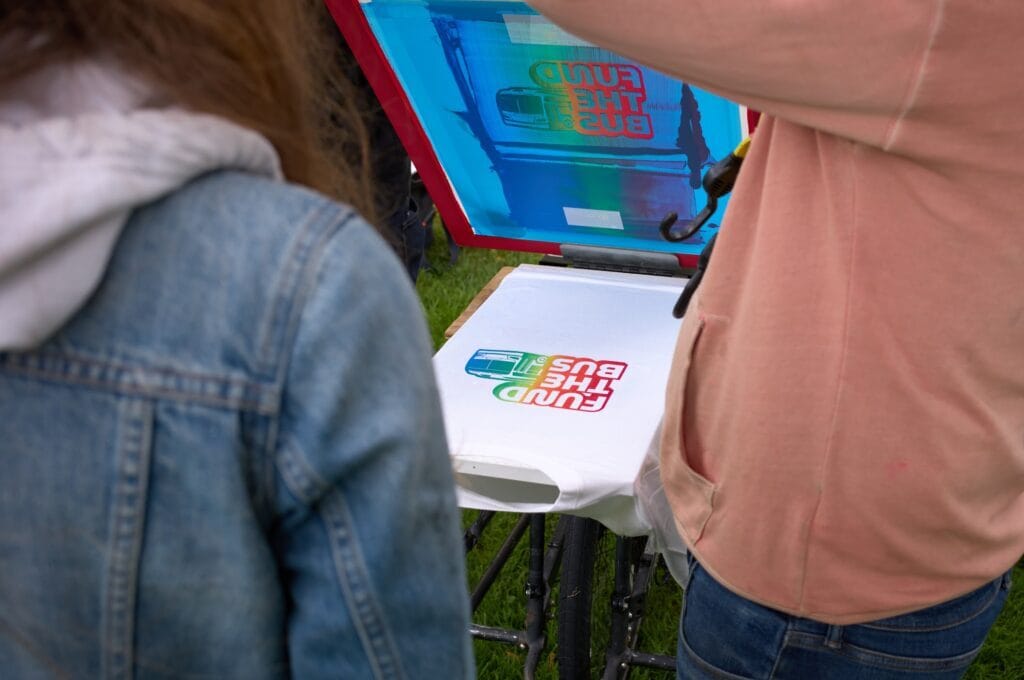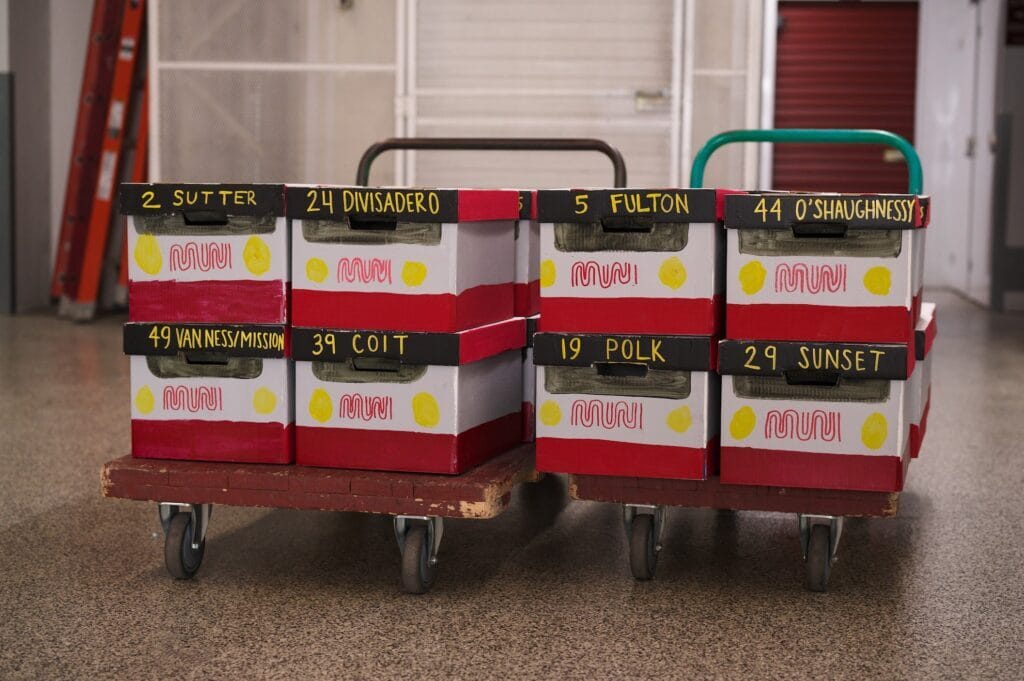The ridehail tax that might fund Muni is fueled by art.

ComMUNIty Transit Act organizers carrying signed petitions to City Hall. Photo credit: Connor Cimowsky
Thanks to the power of art and fun, the ComMUNIty Transit Act is officially on the ballot in San Francisco. By taxing ridehail services who make more than $500,000 in gross receipts at 1-4.5%, public transit operations could be partially funded by private companies like Lyft, Uber, and Waymo.
But the route organizers of this innovative ballot measure took to get through the Department of Elections and in front of voters this November has been a master class in harnessing art to plow through all the political noise and get something good done for the people.
Lately it’s felt like San Francisco is perpetually waiting for Muni, the affectionate name we’ve given our public transit. Ghost buses litter the supposedly handy route-planning maps. Times between buses stretch on. It’s special luck if you run and chase a bus and the driver actually stops and waits for you, like the city gods are smiling down in your favor.
Some people choose to drive instead. “Of course the highway is faster than the bus. You bulldozed a Black neighborhood to make it as fast as possible,” Aditya, an organizer with unaffiliated Safe Street Rebel, explains in reference to the failed Urban Renewal project that continues to impact San Francisco and Oakland.
SFMTA, the authority running the transit in addition to parking, traffic, taxis, and more, is running out of operational money and the situation is dire. It’s also beleaguered by deadweight issues, becoming mired in political gotchas like the recent debate where Stop Crime SF asked mayoral candidates point blank if they’d terminate the director, Jeff Tumlin.
But Muni? It’s beloved. And the signature collectors were wildly successful in getting this measure put on the ballot. So how did the ComMUNIty Transit Act become a nifty, almost sanitized mechanism for getting funding to a vital city service in such a toxic political atmosphere?
Kat Siegal, a cosponsor of the ComMUNIty Transit Act, explains, “We’re trying to celebrate Muni and how vital it is to the health of our city. There’s a lot of negativity around SFMTA and Muni but there’s also a lot of joy around it and we’re trying to evoke that through [the art].” The campaign is true grassroots and the volunteers opened their arms wide to the good vibes of arts and crafts.

Screen printing event held June 8th. Photo Credit: Emily Horsman
At popups, they bring a button-maker and encourage people to make their favorite route number into a souvenir. Their social media is a curation of Muni photography. They decorated the boxes used to bring signed petitions to City Hall so that they looked like different Muni buses. “We did ask if we could get the boxes back and we were told we could not,” Siegal says wistfully.

The last organizers saw of the decorated boxes full of petition signatures. Photo credit: Connor Cimowsky
The campaign has even used original artwork donated by Christine Innes, a San Francisco-based illustrator and designer, in its branding. Innes explains, “I may not have the particular skills needed to be an organizer, but I do think I can create images that help people feel a little spark of recognition, seeing the place they live reflected back to them in this joyful colorful way.”
Why is funding even needed? That’s a little more complicated. Aditya, an organizer with Safe Street Rebel, reminds us, “We don’t charge a fee every time you have a fire. We don’t charge you a fee for walking on the sidewalk. We’ve normalized fares. People think transit has an obligation to pay for itself and we need to fight that.”
Ride share and ride hail services supplement transit in a city where owning a car and parking it can be pretty expensive. But public transit is vital to a city. Artist Innes argues, “We can’t have this incredibly interconnected and vibrant city without Muni. I don’t think the same thing can be achieved with rideshare services.”
The issue goes in front of voters this November and wouldn’t kick in until 2025. We reached out to Lyft, Uber, and Waymo for comment but none of them responded. Siegal explains, “We don’t have a great window into Waymo’s finances,” and it’s unclear whether Waymo has reached the threshold of $500,000 that triggers this tax.
Siegal says, “It’s not a tough sell for people. Most people are on board before we even start talking about the measure.” The Great Highway is another ballot measure that inspired a… car parade? So far, there hasn’t been a coordinated effort to push back against the ComMUNIty Transit Act campaign. Yet.
Disclosure: Prior to discovering Innes’ artwork was connected to the campaign or contacting the artist for an interview, this author purchased a print of it online.
The post Art is Fueling the ComMUNIty Transit Act appeared first on Broke-Ass Stuart's Website.









